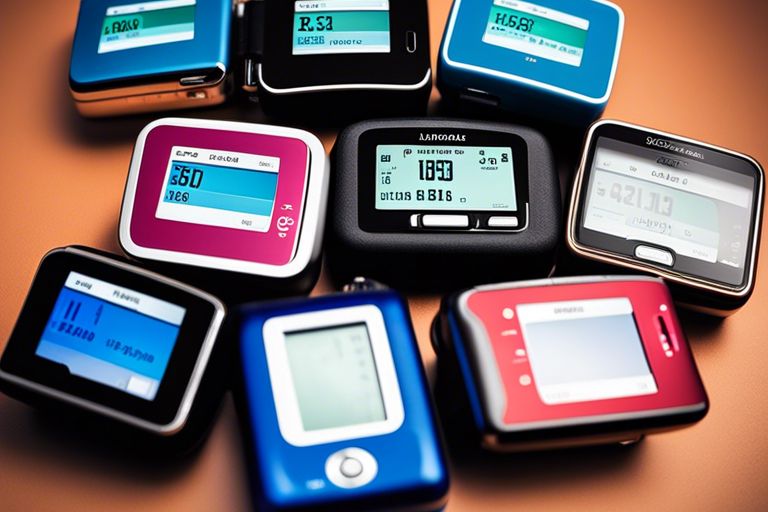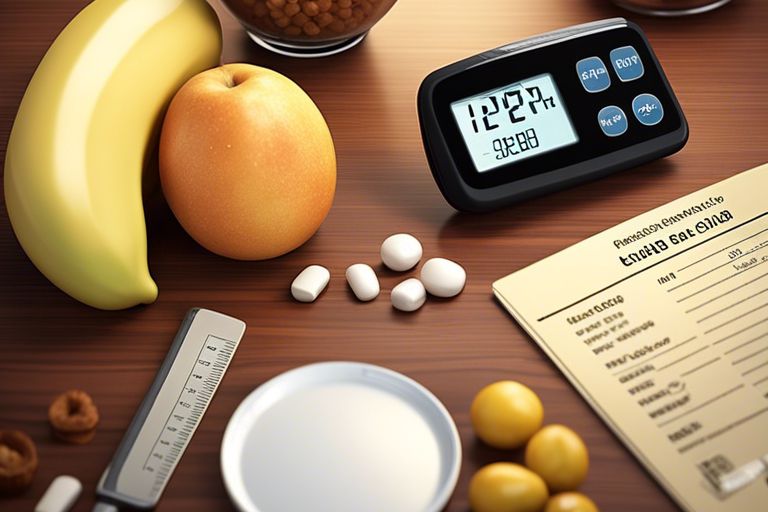Exercising with Type 1 diabetes can present its own set of challenges, but a strategic approach can help individuals manage their condition effectively while staying active. Monitoring blood sugar levels, choosing the right activities, and making necessary adjustments are crucial elements in ensuring a safe and beneficial workout routine. This comprehensive guide will provide helpful tips, insights, and practical advice for individuals looking to maintain an active lifestyle while effectively managing their Type 1 diabetes.
Key Takeaways:
- Regular Exercise: Incorporating regular physical activity into your routine helps in managing blood sugar levels and improving overall health.
- Monitor Blood Sugar Levels: It’s essential to check your blood sugar before, during, and after exercise to prevent hypoglycemia or hyperglycemia.
- Stay Hydrated: Hydration is crucial for people with type 1 diabetes, especially during exercise, to avoid dehydration and maintain proper blood glucose levels.
- Carry Emergency Supplies: Always carry glucose tablets, snacks, and an emergency kit with you during physical activity in case of a sudden drop in blood sugar levels.
- Consult a Healthcare Professional: Before starting any new exercise regimen, consult with your healthcare provider or a diabetes specialist to ensure it aligns with your specific needs and medical concerns.
Preparing for Physical Activity
Obviously, staying physically active is crucial for managing type 1 diabetes. However, it’s important to prepare adequately before engaging in any physical activity to ensure a safe and successful workout.
Monitoring Blood Sugar Levels
For individuals with type 1 diabetes, monitoring blood sugar levels before, during, and after exercise is essential. Before starting any physical activity, it’s important to check your blood glucose levels to ensure they are within a safe range for exercise. During exercise, continue to monitor your levels regularly, especially if you experience any symptoms of hypoglycemia or hyperglycemia.
It’s also vital to keep track of how your body responds to different types of exercise. Some activities may cause your blood sugar levels to drop quickly, while others may lead to a rise. Understanding these patterns can help you make informed decisions about your insulin dosage and dietary choices before and during exercise.
Adjusting Insulin and Diet Before Exercise
Activity
The key to maintaining stable blood sugar levels during exercise is adjusting your insulin dosage and diet accordingly. Before starting any physical activity, consult with your healthcare provider to determine the best approach for managing your insulin levels. They may recommend reducing your insulin dosage or modifying your meal plan to prevent potential spikes or drops in blood sugar levels.
The timing of your meals and insulin injections can also play a significant role in managing your blood sugar levels during exercise. It’s essential to strike the right balance to ensure you have enough energy for your workout while avoiding any drastic fluctuations in glucose levels.
Exercise Tips for People with Type 1 Diabetes
Even with Type 1 Diabetes, maintaining an active lifestyle is not only possible but highly recommended. Regular exercise can help manage blood sugar levels, improve cardiovascular health, and boost overall well-being. However, it is crucial to approach physical activity with caution and awareness of how it affects your body.
Safe and Effective Exercise Types
When it comes to exercise, there are several safe and effective options for individuals with Type 1 Diabetes. Some activities that are generally well-tolerated include:
- Walking
- Swimming
- Cycling
- Yoga
- Strength training
Assume that different types of exercise will have varying impacts on your blood sugar levels, so it’s essential to monitor your glucose before, during, and after physical activity.
| Exercise Type | Impact on Blood Sugar |
| Walking | Moderate increase, may lower blood sugar |
| Swimming | Potential drop in blood sugar during and after |
| Cycling | Variable, closely monitor blood sugar levels |
| Yoga | May help reduce stress levels and stabilize blood sugar |
| Strength Training | Possible initial increase followed by a decrease in blood sugar |
Strategies for Avoiding Low Blood Sugar During Exercise
Effective strategies for avoiding low blood sugar during exercise include:
- Testing blood sugar frequently, especially before and after workouts
- Adjusting insulin doses and carbohydrate intake based on the type and duration of exercise
- Carrying fast-acting carbohydrates or glucose gel for emergencies
- Wearing a medical alert bracelet to indicate your condition
- Hydrating adequately before, during, and after physical activity
Keep in mind, preventing low blood sugar is just as important as managing high blood sugar levels during exercise. By following these tips and staying vigilant about your condition, you can safely enjoy the benefits of staying active with Type 1 Diabetes.
External Factors Influencing Activity
To maintain an active lifestyle with Type 1 Diabetes, it’s essential to consider external factors that may influence your ability to stay physically active. By understanding and managing these factors, you can optimize your activity levels while maintaining proper diabetes management.
- Stress levels
- Weather and seasonal changes
- Social support
Knowing how these external factors can impact your activity levels is crucial for effectively managing your diabetes and overall well-being.
The Role of Stress Management
For individuals with Type 1 Diabetes, stress can significantly impact blood sugar levels and overall health. High levels of stress can lead to insulin resistance, making it harder to control blood sugar levels through exercise. Implementing stress management techniques such as mindfulness, meditation, or yoga can help reduce stress levels and improve diabetes management.
Regular physical activity itself can also be a powerful tool in managing stress. Exercise releases endorphins, which are natural mood lifters, helping to reduce stress and improve overall mental well-being for individuals with Type 1 Diabetes.
The Impact of Weather and Seasonal Changes
Weather and seasonal changes can have a significant impact on your ability to stay active with Type 1 Diabetes. Extreme temperatures, humidity, or seasonal allergies can make it challenging to engage in outdoor activities. It’s important to adapt your exercise routine based on the weather conditions to ensure you can stay active while managing your diabetes effectively.
Management of water intake and monitoring blood sugar levels more frequently during extreme weather conditions are essential strategies to maintain a safe and active lifestyle with Type 1 Diabetes. Planning indoor activities or adjusting your workout schedule based on weather forecasts can help you stay active year-round.
Long-Term Commitment to Fitness
For individuals with Type 1 Diabetes, maintaining a long-term commitment to fitness is crucial for overall health and well-being. Consistency in staying active not only helps in managing blood sugar levels but also improves cardiovascular health, muscle strength, and promotes a positive mindset. It is essential to adopt a sustainable approach to fitness that can be maintained over the long haul.
Setting Realistic Goals and Tracking Progress
Progress in fitness with Type 1 Diabetes starts with setting realistic goals and tracking your advancements. Begin by defining clear, achievable objectives that align with your fitness level and health condition. Whether it’s increasing your daily step count, improving your endurance, or achieving specific fitness milestones, setting incremental goals can help you stay motivated and focused. Keep a journal or use fitness tracking apps to monitor your progress, track your blood sugar levels before and after workouts, and make adjustments as needed to reach your goals.
Building a Supportive Community
The journey to staying active with Type 1 Diabetes can be made smoother and more enjoyable by building a supportive community around you. Surround yourself with family, friends, or fellow individuals with Type 1 Diabetes who understand your challenges and can provide encouragement and motivation. Join online support groups, local fitness classes, or diabetes-specific exercise programs to connect with others who share similar experiences and goals. Having a supportive community can help you stay accountable, motivated, and inspired to continue your fitness journey.
This sense of community can also be found in partnering with healthcare providers, diabetes educators, or certified fitness professionals who have expertise in working with individuals with Type 1 Diabetes. These professionals can provide personalized guidance, monitor your progress, and offer valuable insights to help you safely and effectively integrate physical activity into your daily routine. By building a strong support network, you can enhance your fitness journey and make long-term commitment to staying active with Type 1 Diabetes a rewarding and sustainable lifestyle choice.
Summing up
Now equipped with a comprehensive guide on how to stay active with Type 1 Diabetes, individuals with this condition have the knowledge and tools to pursue an active lifestyle safely and effectively. By following the tips provided on blood sugar management, exercise planning, and the importance of monitoring one’s body, individuals can confidently engage in physical activities while managing their diabetes. It is essential to prioritize self-care, stay educated on the latest developments in diabetes management, and work closely with healthcare professionals to tailor an active routine that suits individual needs. With dedication and diligence, staying active with Type 1 Diabetes is not only achievable but can also lead to improved overall health and well-being.
FAQ
Q: What is Type 1 Diabetes?
A: Type 1 diabetes is a chronic condition in which the pancreas produces little to no insulin, a hormone necessary for regulating blood sugar levels.
Q: How does Type 1 Diabetes impact physical activity?
A: Type 1 diabetes can make it more challenging to stay active as fluctuations in blood sugar levels can affect energy levels and overall well-being during physical activity.
Q: What are the benefits of staying active with Type 1 Diabetes?
A: Staying active with Type 1 diabetes can help improve blood sugar control, reduce the risk of complications, increase insulin sensitivity, and boost overall health and well-being.
Q: How can I stay safe while exercising with Type 1 Diabetes?
A: To stay safe while exercising with Type 1 Diabetes, it’s important to monitor blood sugar levels regularly, carry fast-acting carbohydrates, stay hydrated, and communicate with your healthcare team about your exercise routine.
Q: What are some recommended activities for individuals with Type 1 Diabetes?
A: Recommended activities for individuals with Type 1 Diabetes include aerobic exercises like walking, cycling, swimming, strength training, flexibility exercises, and sports that can be tailored to individual preferences and fitness levels.




